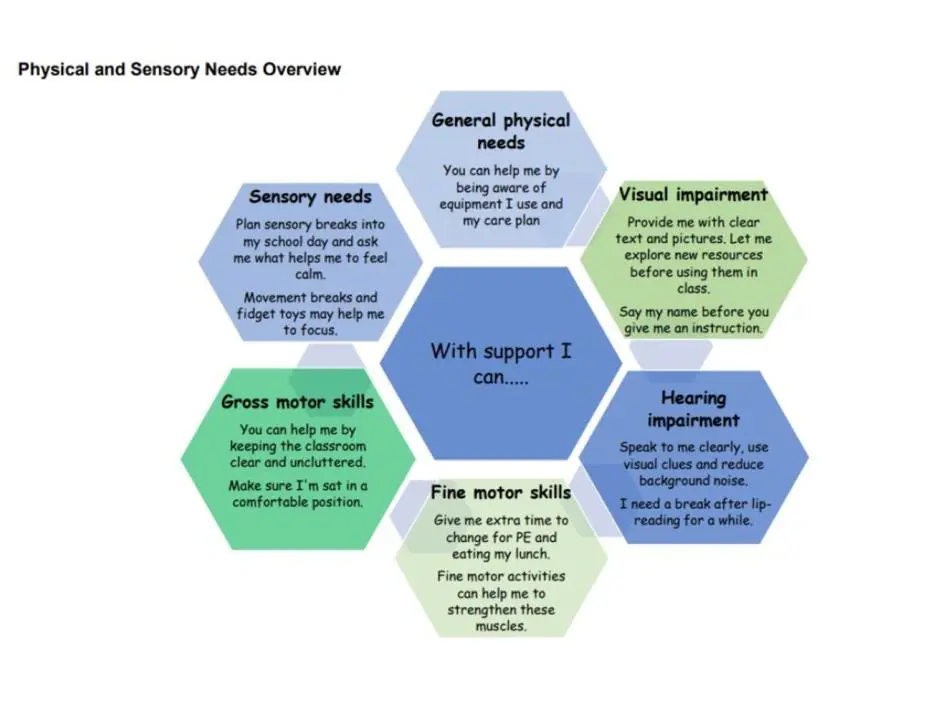Physical and sensory needs overview - young people

Physical and sensory needs overview - children

These resources have been created to support the development of a more in-depth understanding of sensory differences and their impact on children and young people’s function, amongst all professionals.
A large range of NHS resources, including guides and videos, which will help professionals, and parent and carers to better understand children and young people’s sensory differences and how to support them in everyday situations can be found in the Sensory Processing Differences Support Padlet. Some resources have been developed by other areas, but the information is still relevant for families in Bury.
The Sensory Differences Toolkit is a guide for schools/settings/practitioners on how to support children with sensory differences, in order to remove or reduce the impact of this on their learning and function. It is intended to be used with individual children in a child-centred approach rather than groups of children such as whole classes. It can be used across all educational, therapeutic and community settings and age groups e.g. early years, mainstream, special schools, colleges, activity clubs and respite care etc.
The Environmental Sensory Checklist has been developed as a guide to help think about the sensory responses to a setting that some might experience and consider some of the reasonable adjustments that might therefore be implemented.
The Implementing a sensory diet - trial and review will facilitate the identification of what is happening, when.
The My views worksheet documents will facilitate the collection of the CYPs own views (where appropriate) about what their sensory processing challenges are, how they feel in response to their sensory environment, and what currently helps them to feel better/reduce the impact upon them/self-regulate.
When completing the Sensory Differences Toolkit you can refer to the resources on the Sensory Padlet, the What You Might See document that provides some of the most common types of presentation, and the Eight Sensory Systems document which provides more in-depth information on each sensory system and supporting strategies.
This feeding advice programme has been produced to help support children and young people who are having difficulty in eating a range of foods.
Bury professionals can access free CPD training on sensory processing differences and the Sensory Differences Toolkit.
As part of the graduated approach to sensory processing differences there is an expectation that the Sensory Differences Toolkit is completed before requesting further targeted sensory support from services.
Bury young people have developed an Inclusive Activity Toolkit which provides useful information on planning inclusive activities and events for children and young people with sensory differences.
(The below documents are not fully accessible and may not be suitable for users of assistive technology. See: Document accessibility).